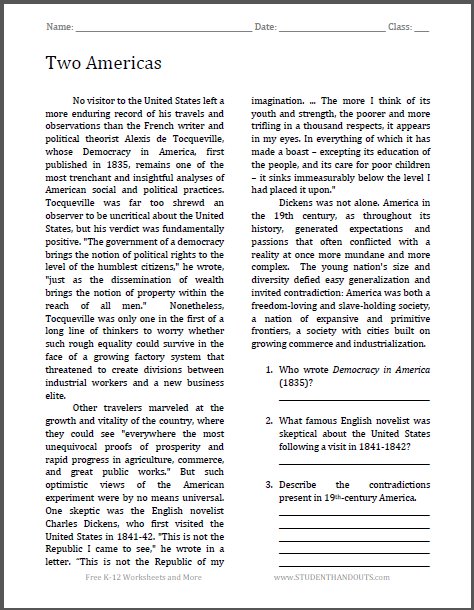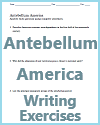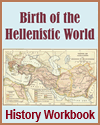No visitor to the United States left a more enduring record of his travels and observations than the French writer and political theorist Alexis de Tocqueville, whose Democracy in America, first published in 1835, remains one of the most trenchant and insightful analyses of American social and political practices. Tocqueville was far too shrewd an observer to be uncritical about the United States, but his verdict was fundamentally positive. "The government of a democracy brings the notion of political rights to the level of the humblest citizens," he wrote, "just as the dissemination of wealth brings the notion of property within the reach of all men." Nonetheless, Tocqueville was only one in the first of a long line of thinkers to worry whether such rough equality could survive in the face of a growing factory system that threatened to create divisions between industrial workers and a new business elite.
Other travelers marveled at the growth and vitality of the country, where they could see "everywhere the most unequivocal proofs of prosperity and rapid progress in agriculture, commerce, and great public works." But such optimistic views of the American experiment were by no means universal. One skeptic was the English novelist Charles Dickens, who first visited the United States in 1841-42. "This is not the Republic I came to see," he wrote in a letter. "This is not the Republic of my imagination. ... The more I think of its youth and strength, the poorer and more trifling in a thousand respects, it appears in my eyes. In everything of which it has made a boast—excepting its education of the people, and its care for poor children—it sinks immeasurably below the level I had placed it upon."
Dickens was not alone. America in the 19th century, as throughout its history, generated expectations and passions that often conflicted with a reality at once more mundane and more complex. The young nation's size and diversity defied easy generalization and invited contradiction: America was both a freedom-loving and slave-holding society, a nation of expansive and primitive frontiers, a society with cities built on growing commerce and industrialization.
Click here to print.
|













